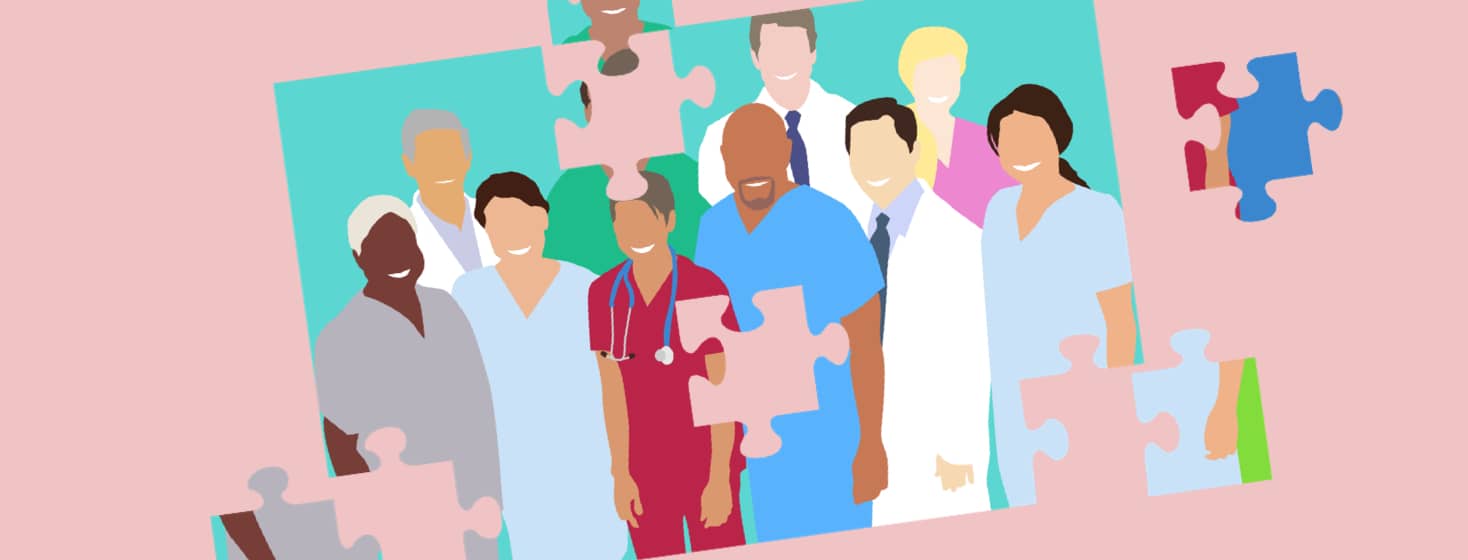A Village of Healthcare Professionals
We quickly needed a village of professionals. Our daughter, Jessie, was born with spinal muscular atrophy (SMA) back in 1974. We quickly realized that we needed to plan for a group of specialized medical professionals who would be an integral part of her team. Therefore, we researched many medical doctors. Her medical team was chosen to meet these healthcare needs.
Choosing the right medical professionals
At first, we chose a family pediatrician. He acted as our local gatekeeper to be the liaison for our team. He was acutely aware of infant and childhood developmental norms. Additionally, he was able to identify and treat common childhood illnesses.
Next, we chose a pediatric neuromuscular disease neurologist, from a well-known New York City Medical Center. There they were able to confirm her diagnosis of SMA.
Other specialists on the team
Subsequently, our next choice was selecting a pediatric rehabilitation physician. His skill was in working with our family and the different therapists to help optimize their care for my daughter. His specialty was working with the therapists on appropriate assistive devices. These devices included wheelchairs, seating devices, and orthotic braces. The back brace was made to help prevent Jessie’s scoliosis from progressing.
The next specialist we chose was a pediatric cardiologist. This doctor would be responsible for any of Jessie’s anticipated cardiac events.
After a while, Jessie started to develop breathing and other respiratory issues. We then selected a pediatric pulmonologist. His specialty was in diagnosing respiratory diseases and treatment protocols. They involved treating respiratory functioning, clearing mucus from the lungs as well as providing mechanical ventilation as needed. Furthermore, he provided pulmonary function testing tracking oxygen and carbon dioxide levels in her blood.
Not just doctors, but other healthcare professionals
When Jessie was on a ventilator, she was seen by a respiratory care specialist. Jessie’s respiratory therapist helped her breathe while on a ventilator. She was involved with ventilator support, suctioning mucus in her lungs, monitoring her respiration rate and other respiratory care.
Jessie’s doctor recommended that a genetic counsellor see her. She advised my wife and me on how SMA can be caused by a genetic variance as well as the possibility of having future children born with SMA. Therefore, her genetic counselor would keep us current on future clinical trials that were on the horizon.
Several times a year, we took our daughter to a dietician. This person was able to monitor her growth and body chemistry through bloodwork and recommended additional nutritional support that would improve her medical needs.
In addition, we had an orthotist treating Jessie. The orthotist made a body brace to help prevent further advancement of her scoliosis.
We further chose a social worker to be involved with the family. The social worker was responsible for the crucial dealings advocating for Jessie with insurance companies, school and other community issues that would arise from time to time.
Additionally, physical, occupational and speech therapists were necessary as well. Jessie’s physical and occupational therapists were able to recommend different types of wheelchairs, accessibility approaches, customized seating devices for her wheelchair, feeding and safe car seating systems.
Jessie’s speech pathologist, besides providing therapy on speech ineligibility, helped her speak in a louder clear voice as well helped her with her respiration. Concurrently, her speech pathologist also helped Jessie be able to safely swallow the modified liquid and solid foods, without signs or symptoms of aspiration pneumonia and other confounding issues.
It really does take a village
To summarize, it DOES take a village of medical professionals to be able to aptly treat children with SMA. Caretakers must be aware of the needs and specific care in providing superior care for their children with SMA. I am sure that you can add to my list of other people that can be helpful to your child’s care team.

Join the conversation